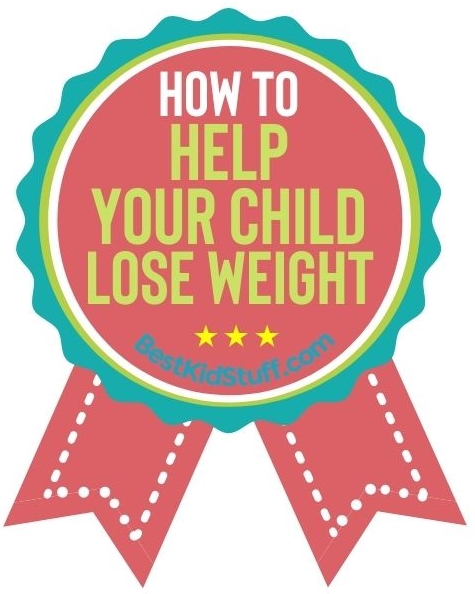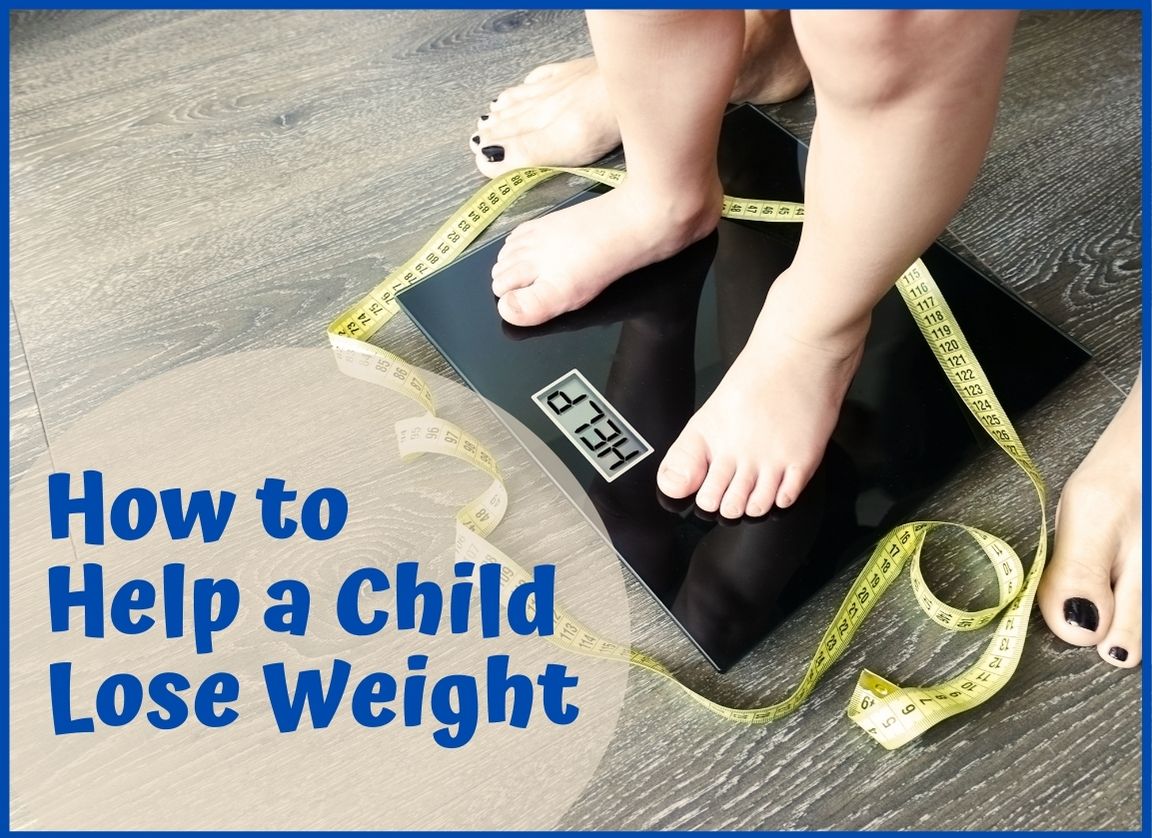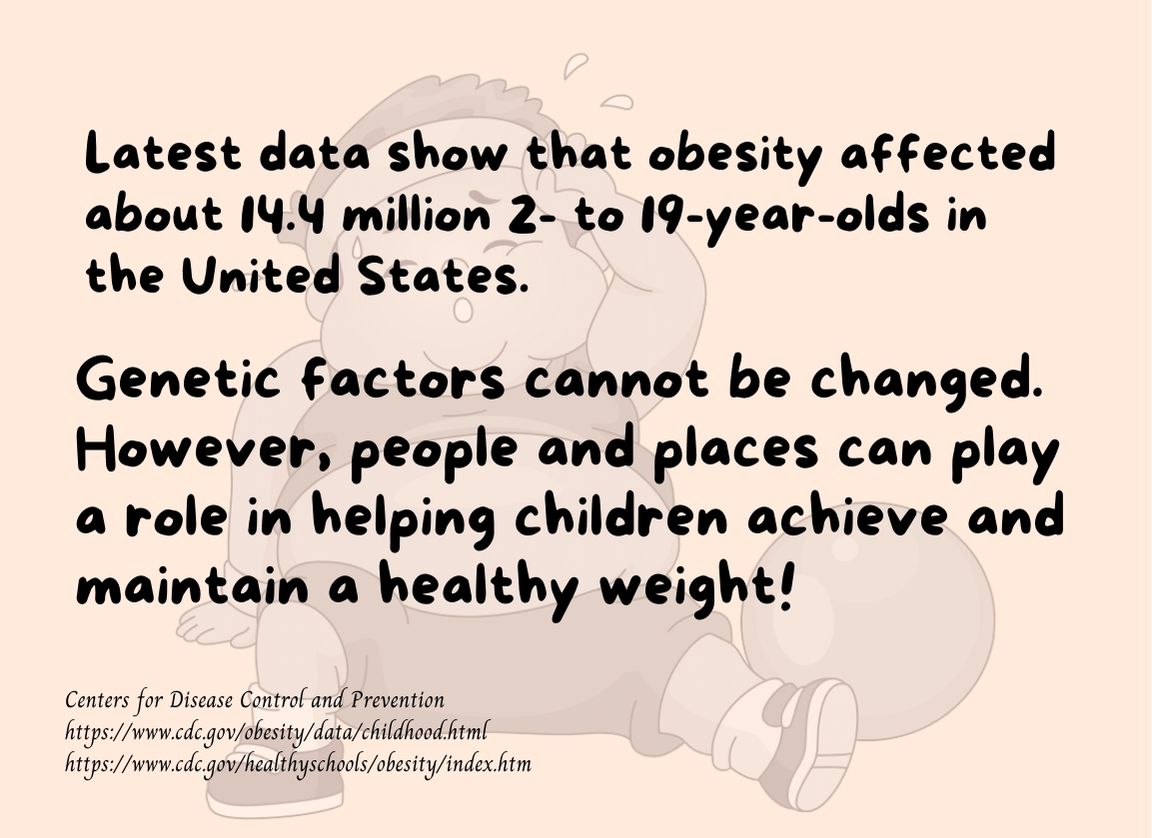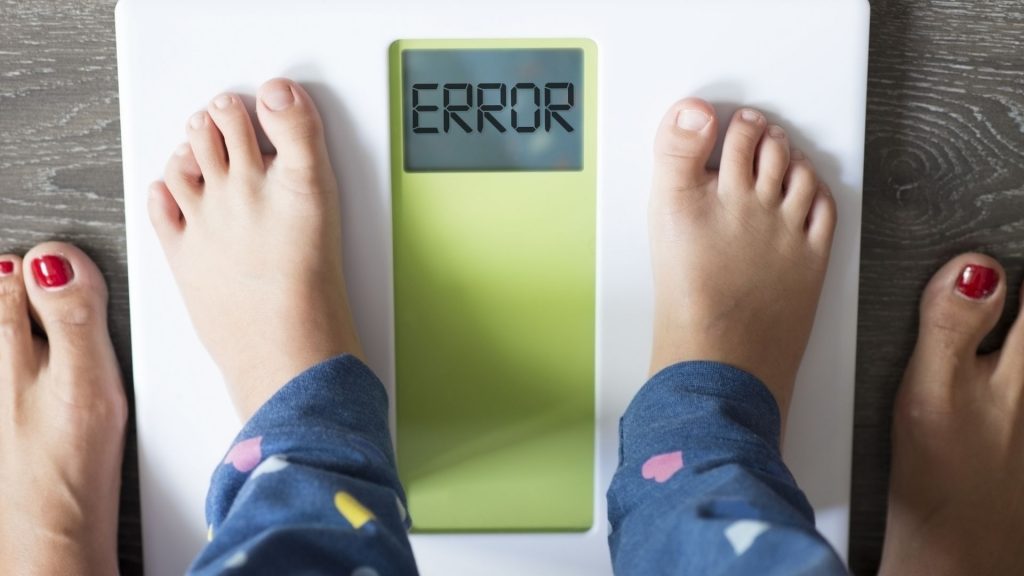
Childhood obesity is a very serious yet common health problem in the US. Studies show that one in five American adolescents and children have weight problems. The staggering weight problems among children trigger a whole realm of other health issues to date. Today, helping your child lose weight has never been more critical!
But obesity is a sensitive topic. Can telling your child how his school trousers no longer fit summon hurt feelings? Can you openly discuss to your child how an eating disorder can result over time? These are just some reasons why many parents remain quiet about the subject and cling to hope that this problem will somehow sort itself out.
Obesity is complex. Several factors can help contribute to having excess weight, including genetics, behavior, and certain medications. However, community and societal factors also matter: school environments, child care, access to affordable and healthy foods, neighborhood design, and access to convenient and safe places for outdoor and physical activities, among others, greatly affects one’s ability to make healthier choices.
Childhood Obesity: Causes and Consequences
Childhood obesity is a critical health issue. This happens when a child is above the healthy and normal weight for their age. In most cases, children and adults often have the same causes of excess weight gain, including genetics and behavior. One’s community may also influence obesity because this can significantly affect your ability to make better and healthier choices.
Behavior. Some of the not-so-healthy behaviors that cause too much weight gain include eating low-nutrient and high-calorie foods, unhealthy sleep routines, and medication use. The lack of physical activities and spending a lot of time on sedentary routines like binge tv watching can also lead to weight gain.
Eating a healthy and balanced meal and practicing different physical activities can help your child grow and keep a healthy weight. This also prevents chronic diseases like heart disease, type 2 diabetes, and some cancers.
The Physical Activity Guidelines for Americans says children between the ages of 6 and 17 should have moderate physical activities every day for at least sixty minutes. Those ages 3 to 5 should also be physically active throughout the day for healthy growth and proper development.
Community Environment. For many parents, it’s hard to practice making healthy food choices and follow the right physical activities suitable for children in places that don’t support healthy habits. Places like schools, childcare centers, or communities can impact your child’s activities and diet through the drinks and food they offer and the type of physical activities. Other factors include social and peer support, health food options, promotion and marketing, or policies that identify how a particular community is designed.
Consequences of Obesity
When childhood obesity is not addressed properly, this can cause harm to the body in so many ways. Overweight children can potentially have:
- High blood pressure and high cholesterol that cause cardiovascular diseases
- Musculoskeletal discomfort and joint problems
- Breathing problems like sleep apnea or asthma
- Gallstones, fatty liver, gastroesophageal reflux (heartburn)
- Psychological problems like depression or anxiety
- Social problems (stigma and bullying)
- Low self-reported quality of life and low self-esteem

Helping Your Child Lose Weight
Weight problems among kids are now one of the major concerns worldwide. Childhood obesity has risen exponentially over the past twenty years in the US alone! Today, the rise in childhood diabetes, osteoporosis, cholesterol, heart ailments, fatty liver, and asthma is undeniable. These diseases, usually seen in adults, have now appeared during childhood. Obesity can even lead to body-image anxiety, bullying, depression, and insecurities.
Thus, weight loss in children has to be done cautiously. As parents, you should make a sensitive and safe weight loss plan, closely monitored and coordinated with a nutritionist, dietician, and pediatrician.
Camden Matherne, Ph.D., a licensed psychologist specializing in eating disorders, teaches parents what and what not to do if they are wary about their kid’s weight. The goal of losing weight among children is to minimize the rate of weight gain without compromising their normal growth and development.
Disclaimer: Please consult your child’s pediatrician before beginning any sort of weight loss diet or activities.
Encourage Moderation and Balance
When it comes to children, parents should stay away from calorie-restricted diets. Worse, eliminating any food groups is dangerous unless you are closely working with a pediatric specialist. Restricting your kids from eating what they love can backfire, especially if they are genetically predisposed to having eating disorders. Children need all the nutrition they need for their bodies and brains to function properly.
So how do you encourage your kids to have a balanced meal? Simple. Develop proper and healthy eating habits.
- Give them plenty of fruits, vegetables, and whole-grain products.
- Go for lean meats, beans, fish, lentils, and poultry.
- Their diet should include non-fat (or low-fat) milk and dairy products, including yogurt and cheese
- Encourage everyone in the family to drink ample amounts of water.
- Limit sugar drinks.
- Stay away from saturated fat and sugar.
You should also limit calorie-rich temptations. When salty, high-sugar, and high-fat snack availability is reduced, this can help your kids develop healthy eating habits. If possible, allow your kids to have these foods rarely. That way, they will see that these foods are ‘treats.’ Below are some easy-to-prepare low-sugar and low-fat snacks (less than 100 calories) that you can try.
- One medium banana or apple
- A cup of grapes or blueberries
- 1 cup of broccoli carrots, with two tablespoons of hummus
- ¼ cup of tuna wrapped in lettuce
- Some oven-baked kale chips
No matter how tempting, never put your child on any kind of diet. If your child’s pediatrician expresses concern about your child’s weight gain, discuss it thoroughly– without your child, if possible. Talk about ways on how you can introduce nutrient-dense foods.
If your child tells you, they want to lose weight, sit down and discuss openly and honestly the different aspects of their body as they grow. Steer clear from talking about losing weight to achieve a certain size. Instead, focus on how exercise and food can help the body feel good.
Embrace Variety
There are so many ways you can provide your kids with a nutritionally-balanced meal. When choosing meals, always consider giving them fruits, grains, proteins, vegetables, or dairy. It also helps that you eat as a family, ensuring everybody knows how to listen to their bodies and recognize when it is time to stop eating. Also, stop practicing the “clean plate rule,” as this can interfere with your kid’s natural satiety signals.
Here are other helpful tips to get your child to eat better:
- Avoid giving them large portions of foods or drinks for meals and snacks. Start with minimal portions. Let your kid ask for more only if they are still hungry.
- If you are giving them foods from containers or packages, read the Nutrition Facts Label to check what amount is equivalent to one serving. Your child’s portion should match the correct serving size found on the label so they can avoid extra fat, calories, and sugar.
- Avoid buying high-calorie foods and drinks. But if you cannot, keep them out of sight. Instead, put healthy drinks and foods where your kids can easily see.
- Lessen your fast food. However, if you’re visiting a fast-food restaurant, encourage your kids to eat healthier options like sliced fruits instead of fries.
- If possible, sit down together with your family during meals. Do not allow eating in front of the computer, television, and other devices.
Help Your Children to Get Physically Active
Aside from being fun, getting your kids into regular physical activities comes with many benefits, including:
- Decreasing blood pressure
- Strengthening bones
- Increasing self-esteem
- Reducing anxiety and stress
- Helping with weight management
Kids between 3 and 5 years old must be physically active throughout the day. Those 6 to 17 years old should have 60 minutes of physical activities in a day, although these activities may not be done all at once. Encourage them to have several five or ten-minute spurts of activities every day. To encourage your children to do physical activities regularly, below are some things you can consider.
- Get your child to choose a fun activity they can do regularly, like running around the playground, joining a dance class or sports team, or even climbing at your park’s jungle gym.
- Help your child look for simple activities they can do alone or at home like jumping rope, playing catch, playing tag, riding a bike, or shooting baskets.
- Screen time should be limited. Television, cell phone, and other devices must only be accessible for two hours each day.
- Plan active outings with the whole family, like hiking or walking to your favorite outdoor spot.
Make Sure Your Child Gets Adequate Sleep
There have been numerous studies associating obesity with inadequate sleep. When you don’t have ample sleeping time, you tend to eat more and feel lazy towards physical activity. Children need more sleeping time than adults, although the amount will vary by age. Ideally, though, children need between 9 and 14 hours of sleep every day. Toddlers should have at least 11 hours (up to 14 hours) daily, while school-aged kids need 9-12 hours.
Here’s how kids generally behave if they don’t get adequate sleep:
- Very hyperactive (especially the younger ones)
- Easily fall asleep during the day
- Struggle with school
- Have a hard time paying attention
- Whiny, cranky, moody, and irritable
- Exhibit behavior problems
For parents, following a good sleeping habit may be challenging at first. It’s critically important that you encourage good sleep habits with your kids. How can you do that, then?
- Stick to your kid’s regular bedtime. When you say lights out is at 8 PM, follow the schedule religiously. Your kids may bargain with you at some point, i.e., ask for more screen time, or a few minutes on the TV, but be firm in imposing the bedtime routine. Ideally, inform your kids at least thirty minutes before lights out, so they can do and finish all they want before sleeping.
- All screens (phones, tablets, computers, TVs, video games) should be turned off one hour before bedtime. If possible, remove all these devices from your kid’s bedroom.
Go for a Low-Glycemic Diet
Glycemic Index (GI) is the carbohydrate’s ability to raise blood glucose. According to studies, low-glycemic foods can help you feel full for longer since it will take some time to get fully digested. It also makes blood sugar stable, and these foods contain more fiber. However, carbs do not have to be removed completely from your child’s diet. Just choose low (or medium) glycemic carbs like carrots, apples, broccoli, beans, berries, peanut butter, nuts, fruits, milk, yogurt with honey, pineapple, cheese, banana, pasta, dried fruits, high fiber cereals, ice cream, and brown rice.
Examples of high-glycemic carbs include potatoes, corn, white rice, chips, French fries, jam, juice, frozen yogurt, waffles, pancakes, popcorn, pizza, or instant oats.
Also, avoid giving cold soft drinks, juice, or energy drinks to your children when they are hungry since these can add up to their weight gain. Water will always be the best thirst-quencher.
Create a Meal Plan
Try to avoid long gaps between your kid’s meals. An empty stomach for hours can lead to overeating during regular meals. Ideally, give your kids three small meals and two smaller snacks in between.
When you create a meal plan, it also has to be balanced. Meaning you can incorporate sweet treats regularly. When you deprive your child of certain food (sweets, especially for younger children), they will crave these foods even more and end up overeating when they have the chance. Worse, they will even start to sneak in foods they are always deprived of.
That’s why your meal plan has to be neutral. Try not to label foods as “good” or “bad.” Instead of telling your kids that “you cannot have soda because soda is not good for the body,” try saying, “soda tastes so good, but it cannot help your body grow healthy. Thus, we only serve them during special occasions”. With that, your kids will understand that they are not deprived of soda. Only, they cannot have them not unless there are special occasions.
Smaller plates should always be used, if possible. Avoid serving food to your kids on adult-sized plates. Using smaller plates allows you to give your child smaller portions.
Listen to Your Children’s Concerns
If you notice your child getting self-conscious or find out that they are constantly teased about their weight, sit down and discuss this with your child. Dr. Matherne said that parents must listen to their kids. Hear what your kids have to say, and never invalidate their feelings. Listen calmly, stay present, and don’t go flying off the handles to whoever bullies your child because of their weight. Just listen, validate their feelings, and tell them that they are not alone. How can you validate their feelings then?
- “This is so hard, and I am sorry that you are hurting. Know that I am and will always be here for you”.
- “I know this is hard for you, but we will figure this out together.”
Having open communication with your child about weight and food can help because they will slowly learn the concepts surrounding dieting and health as they age. Oftentimes, they can hear messages from others (adults, peers, TVs, ads) that may not be conducive to having a healthy relationship with food. But when you lay a solid foundation, this will help keep your children away from negative messages that can destroy their self-esteem.
Choose Lots of Fruits and Veggies (and then some…)
While fruits and vegetables are among the most nutritious food options, not all are healthy. Potatoes and corn, for example, have a high glycemic index. Tropical fruits like pineapples and bananas can add more weight than apples, grapes, cantaloupes, berries, kiwis, oranges.
Aside from these healthy foods, make sure to include proteins in your kid’s meals. Protein is filling, plus it helps stimulate a hormone that helps the body release stored fat. Furthermore, fat is not always the enemy. We call healthy fats as nut butter, unsaturated oils, and even avocado which helps slow down digestion. These fats also make veggies, whole grains, and fruits more filling.
Fat is essential to the body. We need fat so that the body can make cell membranes. The type of fat you give to your child will affect their nervous system, immune system, and overall health.
And you know when they say, “avoid foods that your grannies could not have recognized”?. Fake foods like cheese puffs, chicken nuggets, fruit roll-ups, and other food products that you cannot find naturally are never healthy choices. When choosing grains, go for least-processed options like wheat bread, brown rice, or steel-cut oatmeal.
Never Make Your Child Feel Deprived
No parent wants to put their kid on a diet. But if your whole family will focus on having a low-glycemic diet, your child with a weight problem will not feel singled out. When you help your kid focus on the quality and type of food instead of focusing on the quantity, he/she can still enjoy his meals until he is satisfied and still gets to shred off some pounds.
Embracing a more balanced approach to eating healthy is successful as a family. Do not single out a child for special treatment. And when everybody is eating, discuss food positively. Below are examples of how you can use this approach:
- Everybody will eat together at the dining table.
- As a family, weekends are meant for pizza.
- Let’s wait a few minutes and decide if we can all have second helpings.
- This broccoli tastes amazing!
- Your muscles are growing. Now, that chicken is packed with protein.
Another thing is to understand the stress that the pandemic has caused. At the onset of the COVID-19 pandemic, more and more people have become sedentary. After-school activities, play dates, and sports were all put on hold, leading to inactivity and weight gain. The usual eating routines suddenly went by the wayside.
While this pandemic is not here for good, it’s important to keep your kid’s body fueled. You and your kids should eat every four hours, but make sure to eat only in moderation. Not eating for so long can cause your blood sugar to crash and result in sudden and uncontrollable cravings. But when you feed your child regularly, they will feel nourished throughout the day and stay away from overeating.
Seek Professional Help
If you have tried everything to help your child lose weight and still no results are achieved, it’s better to seek professional help. Your child’s health care professional can help you with possible options. Maybe he can recommend a plan for physical activities or healthy eating or endorse you to a registered dietician or a weight-management specialist. Try also to check your community health clinic, local hospital, or health department because they might offer weight management programs designed for teens and children.
What Makes an Excellent Weight Management Program
When looking for a program to help manage your child’s weight, go for programs that:
- Include different health care providers on staff like psychologists, doctors, and registered dieticians.
- Monitors your child’s growth, weight, and health before enrollment and throughout the program.
- Guide your family into leading a healthy lifestyle: healthy drinking, eating, and physical activity habits once the program ends.
- Adapt to your child’s abilities and age. Remember that programs for teenagers are different from elementary-aged children.
When your child is already in a weight management program, help them by being supportive and positive the whole time. Be there when setting and achieving specific goals and tracking their progress. Successes must also be rewarded with hugs and praises. Also, remind your child how special and loved they are. A child’s feelings about themself heavily rely on how parents think and feel about them.

Weight Loss in Children: The Dos and Don’ts
You need to be aware of some dos and don’ts on your kid’s weight loss program!
Dos
- Instill healthy habits like daily exercises. Keep your children away from binging on unhealthy foods. Your children should avoid eating while watching TV as well. Support your children in their weight loss program. One study shows that too much sugar can make your kid cranky. When your child achieves something, be sure to reward them with a toy, movie tickets, etc. (and not their favorite food).
- If your child is older, their daily schedule should include running errands. Make them take the stairs instead of using the elevator. When they want to go to an activity zone, let them walk there.
- Lessen food portions but never eliminate meals. Remember that it is not what your kid eats but the quantity of what they eat that matters a lot when they’re trying to lose weight.
- Unhealthy foods should be substituted with healthy homemade snacks like salads, sprouts, grilled chicken strips, diced carrots, grapes, cucumber, watermelon, strawberries, which are good options.
Don’ts
- Do not set unrealistic plans. Do not dismiss immediately if the kid wants to eat something against the weight loss plan. Chances are, the restriction adds to their stress and ultimately leads to weight problems. Take the forbidden food out of the equation gradually.
- Do not give your kids more than two hours of screen time every day, especially watching TV or playing video games, so they will avoid sitting on the couch for hours.
- Do not create a kids-only meal plan. Together with your family and close friends, work as a team. Stick to serving foods that are healthy for everyone. Set an example for your kid so they remain motivated.
- Do not give up. Always remind your child that change does not happen overnight.
- Do not rush. Avoid fad diets or fast-track weight loss programs. They show your desired results, but they do more harm than good in the long run.
With childhood obesity a pressing problem among parents today, parents need to step up. Weight loss in kids is attainable with professional guidance, caution, and care.








